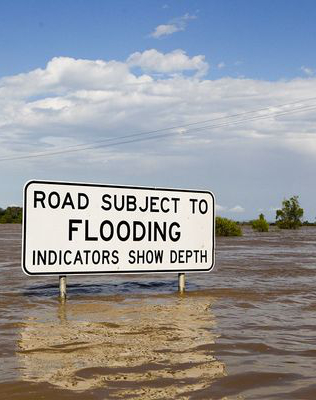Flood warning update begins
 The Federal Government has launched a decade-long overhaul of Australia’s flood warning systems.
The Federal Government has launched a decade-long overhaul of Australia’s flood warning systems.
The $236 million scheme focuses on upgrading and expanding the flood gauge network, which provides essential data for flood forecasts and warnings.
Currently, the Bureau of Meteorology owns only about one-third of the 8,000 flood gauges it uses nationwide.
Through the new initiative, the Bureau will acquire more than 1,500 additional gauges, with a significant number - approximately 1,000 - being installed in Queensland, the most flood-prone state.
Since March 2024, the Bureau has been working with 64 councils across Queensland to prioritise upgrades at 594 key sites.
Some progress has already been made, with work completed on the flood gauge at Kamerunga Bridge in Cairns, which was damaged by Tropical Cyclone Jasper in 2023.
Additionally, efforts are underway to replace damaged infrastructure in the Burrum and Cherwell Rivers in the Bundaberg region.
The plan includes remediating and installing new gauges at 69 sites by the end of 2024.
This includes gauges in major river systems such as the Burdekin, Logan, Albert, and Condamine Rivers.
By June 2025, the total number of flood gauges in Queensland is expected to reach 200.
The government also intends to extend these efforts to NSW, with work set to begin later this year.
A $15 million investment is already in place to assist NSW councils with the installation and operation of gauges.
The initiative is in response to longstanding warnings about the country’s fragmented flood gauge system, which experts had identified as a vulnerability during extreme weather events.
Minister for the Environment and Water Tanya Plibersek noted that studies since 2015 had called for the Federal Government to take responsibility for the flood warning network, and that “under Labor work is now underway to fix this”.
Minister for Emergency Management Jenny McAllister highlighted the significance of the project.
“Flooding is the second most deadly natural hazard after heatwaves for our communities, and one of the costliest when it comes to insured losses,” she said.
“Information is key to our mitigation and preparedness. This work will improve access to rain and river level observations, helping communities and governments to target their preparations for disasters.”
The program follows recommendations from several reviews, including the 2022 NSW Flood Inquiry, which emphasised the need to consolidate responsibility for the flood gauge network under the Bureau of Meteorology.








 Print
Print